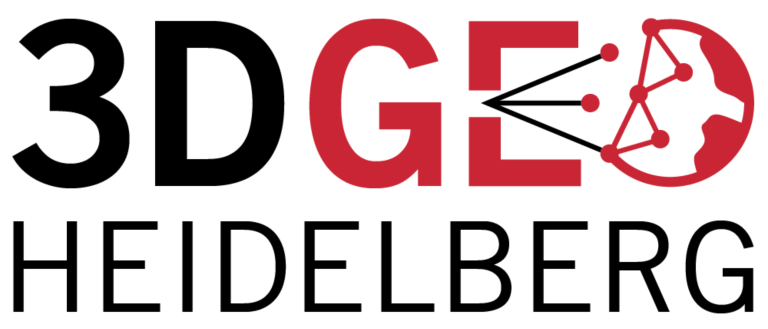GIScience News Blog
-
HeiGIT and German Red Cross representation at DLR Humanitarian Technology Days 2019
Last week, Michael Schultz (GIScience Research Group) attended the Humanitarian Technology Days 2019 that was organized by the German Aerospace Center (Deutsches Zentrum für Luft- und Raumfahrt, DLR) as a representative of the GIScience Research Group/ HeiGIT and of our collaboration with German Red Cross. For two days, around 80 scientists, humanitarian actors and funding…
-
HeiGIT at German Red Cross “Digitalisation in Civil Protection” congress
HeiGIT members Melanie Eckle and Martin Hilljegerdes were invited to the “Digital in civil protection” congress of the Landesverband Westfalen-Lippe in Münster to share insights and to present current activities all around “Potentials of Open Data and Digital Humanitarians for civil protection“. They shared experiences and impacts of the collaborative efforts of the Missing Maps…
-
How can LiDAR data help to understand early Olmec subsistence in Mexico?
From their beginnings some 4,000 years ago to their decadence around 400 b.c., the Olmec people achieved a high level of sociopolitical complexity and dominated their native geographic territory, the southern Gulf Coast of Mexico. The first Olmec capital of San Lorenzo, Veracruz, was the only site in Mesoamerica that produced imposing monumental stone sculpture…
-
New Highlights at STAP19
Three invited speakers are now joining the compact course and workshop STAP19 on Spatial and Temporal Analysis of Geographic Phenomena organized by the 3DGeo and FCGL at IWR in Heidelberg. Dr. Gottfried Mandlburger (Institute for Photogrammetry, University of Stuttgart) will give a talk on methods of feature and information extraction from geographic 3D point clouds.…
-
The future of OpenMapSurfers tiles
OpenMapSurfer is the name of a web tile service based on OpenStreetMap data developed by Maxim Rylov and hosted by the Heidelberg Institute for Geoinformation Technology. The map style is a general purpose “basemap” layer featuring some unique properties, such as high cartographic quality label placement, see floor bathymetry, and a pleasant warm color scheme.…
-
Teaching geodata acquisition in and around Heidelberg
As part of the lecture “Geodatenerfassung”, geography students in their first semester turned theory of digital geodata acquisition into practice. Based on their aims and requirements, the students acquired geodata with different methods and sensors. Using a high-end Riegl VZ-2000i terrestrial laser scanner, two groups captured the old town of Heidelberg and a limestone quarry…
-
Micro-Mapping für KI: Exponat auf der MS Wissenschaft
Auch dieses Jahr geht das Ausstellungsschiff MS Wissenschaft auf Tour. Im Fokus steht das Thema Künstliche Intelligenz (KI). Mit an Bord das Exponat „Micro-Mapping“, das wir am HeiGIT in Kooperation mit dem Alfred-Wegener-Institut erstellen. Unser Exponat stellt die Bedeutung des Menschen, besser gesagt: einer Menschenmenge („Crowd“), bei der Entwicklung von KI in den Vordergrund. Es…
-
Visualizing 3D Spatial Data with GigaMesh – Tutorial Videos
A series of video tutorials of GigaMesh has recently become available on YouTube. GigaMesh is a software framework for displaying, processing and visualizing large meshes of 3D spatial data representing 2D surfaces. The most recent tutorial by Paul Bayer and Hubert Mara presents a rapid method of hillshading for a geospatial dataset. The video shows…
-
Machine Learning for Space and Earth Observation Data (ML-SEOD) 2019 at ICCSA
Machine Learning for Space and Earth Observation Data (ML-SEOD) 2019 Call for Papers The Earth and Space environments are being monitored by an unprecedented amount of sensors: Earth observation satellites, sensor networks, telescopes working in different wavelengths, human records of Earth and Space events, etc. This generates a huge amount of raw data that must…
-
Solve routing optimization with VROOM + openrouteservice
In a Vehicle Routing Problem (VRP, an example is the Traveling Salesman Problem), we are concerned with finding optimal routes for a fleet of vehicles having to reach given destinations, e.g., in order to deliver goods to customers. Due to its high computational complexity, this task requires dedicated VRP solvers, such as VROOM. In collaboration with…
-
Reminder: VGI ALIVE Special Issue of ISPRS IJGI extended to 15 March 2019
we want to remind you about the extended submission deadline (15 March 2019) for the Special Issue “Volunteered Geographic Information: Analysis, Integration, Vision, Engagement (VGI-ALIVE)”of the ISPRS International Journal of Geo-Information (IJGI) The steady rise of data volume shared on already-established and new Volunteered Geographic Information (VGI) and social media platforms calls for advanced analysis…
3D 3DGEO Big Spatial Data CAP4Access Citizen Science Climate Change Conference crisis mapping Crowdsourcing data quality deep learning disaster DisasterMapping GIScience heigit HELIOS HOT humanitarian humanitarian mapping Humanitarian OpenStreetMap team intrinsic quality analysis landuse laser scanning Lidar machine-learning Mapathon MapSwipe Missing Maps MissingMaps ohsome ohsome example Open data openrouteservice OpenStreetMap OSM OSM History Analytics Quality quality analysis remote sensing routing social media spatial analysis Teaching VGI Workshop


